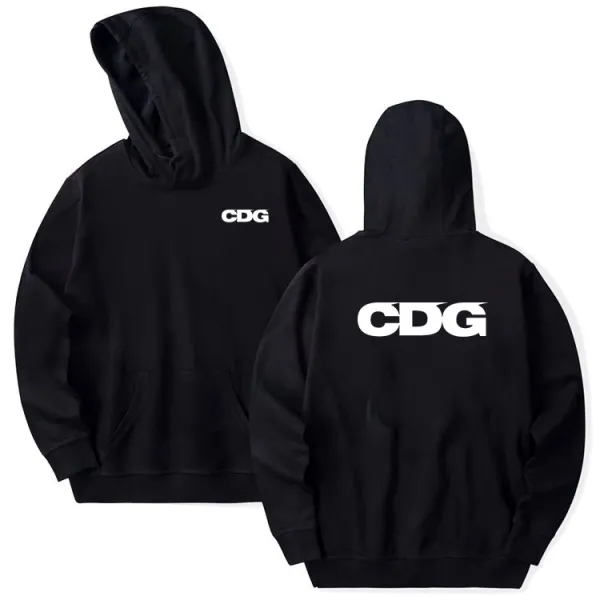In the global landscape of high fashion, few brands embody artistic defiance and intellectual experimentation as powerfully as Comme des Garçons. Created by visionary designer Rei Kawakubo, the Japanese label has spent decades challenging conventional beauty standards and reshaping the dialogue around how clothing can express identity, emotion, and thought. More than a brand, Comme des Garçons—often abbreviated CDG—is a cultural force, a philosophy, and a cornerstone of avant-garde fashion.
Across runways, retail concepts, and influential sub-labels, Comme des Garçons continues to push boundaries and inspire both designers and consumers to rethink the purpose and power of fashion.
Origins: Rei Kawakubo and the Birth of a Revolution
Comme des Garçons began in Tokyo in 1969, founded by Rei Kawakubo—a self-taught designer who came from a background in art instead of formal fashion training. This unconventional entry into the industry shaped her independent mindset. Kawakubo disliked trends and resisted expectations; instead, she developed a unique design language rooted in:
-
Deconstruction
-
Asymmetry
-
Sculptural silhouettes
-
Raw, distressed fabrication
-
Rebellion against traditional beauty
The brand’s name, French for “like boys,” hints at Kawakubo’s intent to question gender norms and remove restriction from self-expression.
By the early 1980s, CDG was ready for its international debut. When Kawakubo presented her first Paris collection in 1981—infamously labeled “Hiroshima chic”—critics were divided. Shredded fabrics, oversized black garments, and unfinished edges contradicted the glamour of Western fashion. But her boldness sparked a transformation: a new aesthetic of “anti-fashion” had arrived.
The Design Philosophy: The Beauty of Imperfection
Comme des Garçons does not merely design clothing—it seeks to provoke thought. Kawakubo has described her creative process as “starting from zero,” eliminating preconceived notions to discover ideas that have yet to exist. This mindset produces garments that disrupt the comfort of expectation.
Core conceptual values of CDG include:
1️⃣ Anti-establishment Aesthetics
Rejecting trends and commercial demands, Kawakubo favors abstraction and creative expression above wearability.
2️⃣ Wabi-Sabi Influence
Embracing imperfection and impermanence, rooted in Japanese culture.
3️⃣ Gender Fluidity
CDG defies traditional distinctions in menswear and womenswear, long before gender-neutral fashion became mainstream.
4️⃣ Clothing as Art
Collections often resemble sculpture more than apparel, turning runway presentations into immersive experiences.
Like an artist expressing emotion through movement and form, Kawakubo designs clothing that makes us reflect—not simply consume.
Expansion Through Sub-Labels
While the mainline Comme des Garçons collections remain highly conceptual and exclusive, the brand has strategically expanded into additional categories, each serving a unique purpose and audience.
| Sub-Label | Core Identity | Key Appeal |
|---|---|---|
| CDG Play (2002–) | Casual, graphic-driven | Heart logo, entry-level luxury basics |
| Comme des Garçons Shirt | Creative tailoring | Pattern mixing, shirt-focused design |
| Comme des Garçons Homme / Plus | Refined menswear | Elevated construction and silhouette innovation |
| CDG Black | Accessible avant-garde | Dark tones, edgy graphics |
| CDG Wallet | Leather goods | Minimalist luxury accessories |
This ecosystem allows Comme des Garçons to reach diverse consumers—from high fashion collectors to everyday streetwear fans—while preserving creative purity in the mainline brand.
The Heart Logo: Playful Meets Iconic
The CDG Play line introduced a visual symbol that would become a global streetwear icon: the red heart with wide cartoon eyes, designed by Polish artist Filip Pagowski. What began as a whimsical logo quickly turned into a cultural phenomenon, printed on hoodies, T-shirts, and sneakers.
Its versatility helped CDG reach a new generation of fashion lovers. Collaborations, especially CDG x Converse, transformed the heart logo into a staple of urban style—accessible yet respected in high fashion circles.
Retail Innovation: Dover Street Market
In 2004, Kawakubo and longtime partner Adrian Joffe launched Dover Street Market (DSM) in London—more than a boutique, it was an immersive fashion universe. DSM disrupted retail norms through:
-
Multi-brand curation with high artistic standards
-
Gallery-like architectural installations
-
Frequent layout changes, keeping stores continually evolving
-
Balanced mix of luxury, youth culture, and creativity
Today, Dover Street Market locations in Tokyo, New York, Los Angeles, Beijing, and beyond serve as cultural hubs where emerging designers and experimental fashion thrive.
Influence on Culture and Industry
Comme des Garçons has deeply influenced global fashion in several key ways:
✅ Redefining beauty standards
Where mainstream fashion sought perfection, Kawakubo highlighted irregularity, darkness, and conceptual depth.
✅ Inspiring future designers
Notable creatives, from Junya Watanabe to Tao Kurihara, emerged under the CDG umbrella, carrying forward the brand’s intellectual spirit.
✅ Streetwear–luxury crossover
Long before high fashion embraced hoodies and sneakers, CDG blurred these worlds through accessible sub-labels.
✅ Encouraging individuality
CDG empowers wearers to express who they are—not who fashion says they should be.
Why Comme des Garçons Remains Timeless
Even after more than 50 years, CDG retains rare relevance in a rapidly shifting industry. Its longevity comes from:
-
Staying true to artistic identity
-
Refusing to chase trends
-
Maintaining cultural substance behind design
-
Nurturing creativity in every tier of the brand
Comme des Garçons is not nostalgia—it is innovation in constant motion.
Conclusion
Comme des Garçons stands as a testament to what fashion can achieve when led by uncompromising vision. Rei Kawakubo has spent her career questioning beauty, structure, and societal expectations—and the results have transformed an entire industry. From sculptural runway masterpieces to globally beloved streetwear staples, CDG continues to expand the definition of what clothing can represent.


